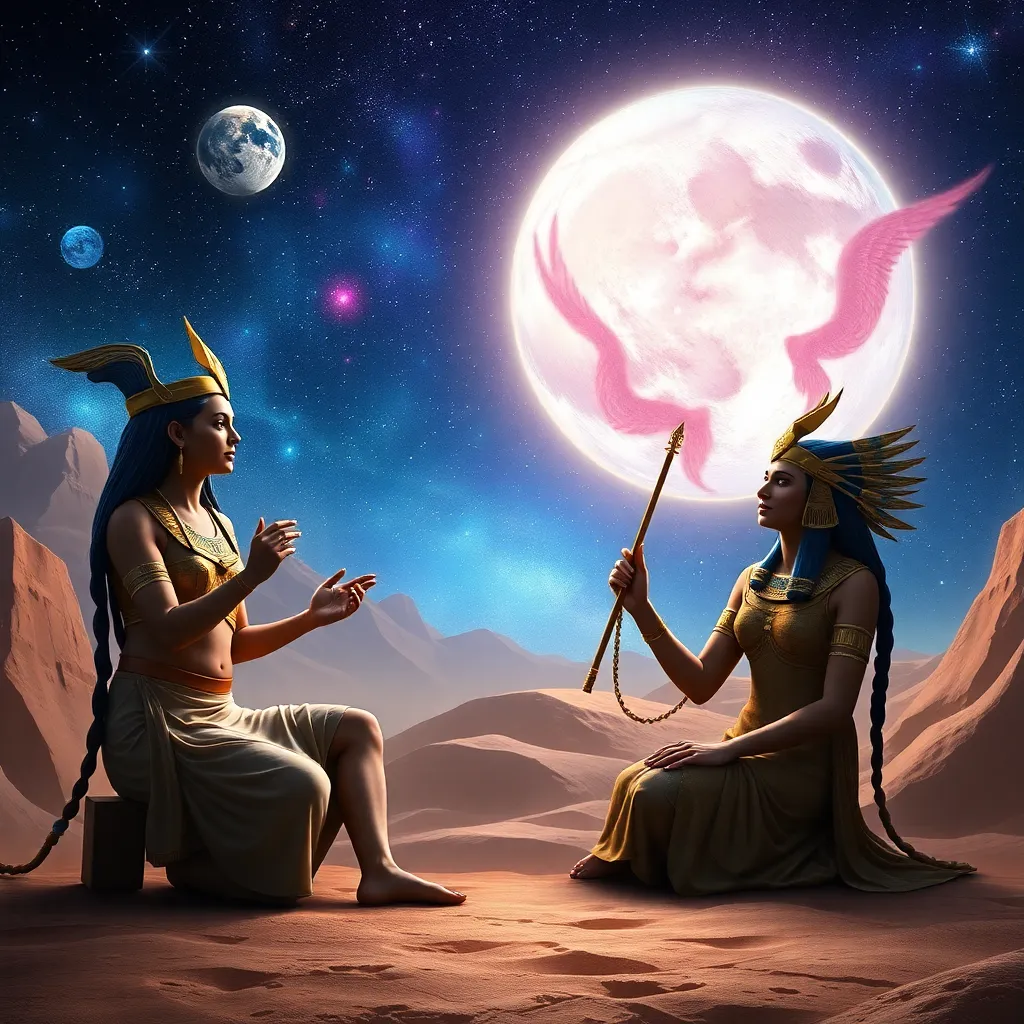The Role of the Goddess Hathor: Music and Love in the Cosmos
I. Introduction
Hathor, one of the most revered goddesses in ancient Egyptian mythology, holds a significant place in the pantheon due to her multifaceted nature. Often depicted as a woman with cow horns and a solar disk, she embodies the essential qualities of music and love, which were vital to both personal and cosmic harmony.
The duality of Hathor as a goddess of music and love illustrates her profound influence over various aspects of life, from the joy of celebrations to the intimacy of romantic relationships. This article seeks to explore Hathor’s enduring influence on cosmic harmony and her role in bridging the realms of the divine and the mundane.
II. Historical Context of Hathor
Hathor’s origins can be traced back to the early dynastic period of Egypt, evolving into one of the most complex deities in the Egyptian religion. She was worshipped in various forms, with her primary cult center located in Dendera.
Key myths associated with Hathor include her portrayal as the mother of Horus and her role in the myth of the Eye of Ra, representing both nurturing and destruction. She is often depicted in art and architecture, showcasing her beauty and musical attributes, such as:
- Wall paintings in temples
- Statues holding musical instruments
- Reliefs depicting her in festive scenes
III. Hathor as the Goddess of Music
Music held a central place in ancient Egyptian culture, intertwining with religious and social life. Hathor was considered the divine source of music, inspiring both musicians and dancers. Her association with joy and celebration made her a prominent figure during various rituals and festivities.
Instruments such as:
- Harps
- Lyres
- Drums
were often played in her honor. Rituals dedicated to Hathor included music and dance, celebrating the cycles of life and the divine connection to the cosmos.
IV. Hathor as the Goddess of Love
Expressions of love in ancient Egyptian society were deeply intertwined with religious beliefs, and Hathor played a pivotal role in romantic relationships and marriage. She was revered as a protector of couples and families, symbolizing both romantic love and maternal affection.
Hathor’s influence extended to:
- Marriage ceremonies, where couples sought her blessings
- Fertility rituals aimed at ensuring successful childbirth
- Festivals celebrating love and companionship
Her worship often involved offerings that reflected devotion and the celebration of love, reinforcing her status as a nurturing figure in both personal and communal contexts.
V. The Cosmic Connection: Music and Love
In ancient Egyptian beliefs, the universe was seen as a harmonious entity where music and love played crucial roles in maintaining cosmic order. The concept of cosmic harmony was essential, as it represented the balance between chaos and order.
Hathor’s role in this balance was significant, as she was believed to:
- Facilitate the connection between the divine and earthly realms
- Inspire creativity and joy through music
- Foster love and relationships that contributed to societal harmony
This interplay between music, love, and the universe reflects the belief that both elements were vital for a harmonious existence, and Hathor was the embodiment of this divine connection.
VI. Modern Interpretations of Hathor’s Influence
Hathor’s legacy persists in contemporary spirituality and culture, where her attributes of music and love are recognized as healing forces. Modern practices often draw inspiration from her teachings, emphasizing the importance of joy and connection.
Today, many practitioners explore:
- The therapeutic effects of music in mental health
- Spiritual love rituals that honor relationships
- Community gatherings that celebrate creativity and joy
The resurgence of interest in Hathor among modern practitioners reflects a desire to connect with the divine aspects of music and love, reaffirming her timeless influence.
VII. Rituals and Celebrations in Honor of Hathor
Traditional rituals dedicated to Hathor included music, dance, and offerings that celebrated her dual nature. Festivals such as the Denderah Festival were marked by elaborate ceremonies where communities would gather to honor the goddess with music and joy.
In contemporary times, celebrations inspired by Hathor focus on:
- Artistic expressions through music and dance
- Rituals that emphasize love and connection
- Community events that foster a spirit of togetherness
These modern interpretations not only honor Hathor but also serve to reinforce the values of love and harmony within communities.
VIII. Conclusion
Hathor’s multifaceted role as the goddess of music and love highlights her significance in ancient Egyptian mythology and her enduring impact on contemporary spirituality. From her influence in personal relationships to her role in cosmic harmony, Hathor embodies the vital connection between joy, love, and the universe.
As we reflect on Hathor’s legacy, it encourages us to explore our own connections to music and love, serving as a reminder of the divine harmony that exists within and around us.




